Understanding the landscape: Why the Digital SAT matters for ITESM applicants
First, take a slow breath. Applying to Tecnológico de Monterrey (ITESM) — one of Mexico’s most competitive universities — feels like a marathon and a sprint at the same time. The Digital SAT (the SAT’s modern, fully digital format) increasingly factors into international and domestic applicants’ profiles. Admissions teams consider test scores alongside grades, essays, extracurriculars, and recommendation letters. That means a strong SAT can open doors, but it’s only one piece of your application mosaic.

What students and parents need to know right now (today: September 24, 2025)
Policies can change; always confirm the latest on ITESM’s official admissions pages. As of September 24, 2025, here’s the practical reality you should keep in mind:
- The Digital SAT is widely accepted by global universities, and many applicants to ITESM include SAT scores to strengthen an application.
- Colleges set their own admissions rules — they decide whether SAT scores are required, optional, or used for scholarship decisions. ITESM’s expectations can vary by campus and program, so check the specific program’s admissions page when applying.
- Even when scores are optional, a competitive SAT score can be valuable for merit scholarships and for differentiating applicants from different systems or countries.
How ITESM typically uses standardized test scores
In practice, universities like ITESM use SAT scores for multiple purposes, among them:
- Assessing academic readiness for rigorous programs (engineering, business, computer science, etc.).
- Comparing applicants from different schooling systems (national vs. international curricula).
- Determining eligibility for merit-based financial aid or scholarships.
Because institutional policies can differ by year and by campus, think of the SAT as a strategic asset — especially if you’re aiming for highly selective majors at ITESM.
Recommended score targets and what they mean
Admissions teams don’t look at a raw number in isolation. They want to see whether a student’s performance aligns with the academic demands of the intended major. To be practical and realistic, here are commonly used categories you can aim for (these are target ranges to guide planning, not official minimums):
| Application Goal | Digital SAT (Total) Recommended Target | Why this range helps |
|---|---|---|
| Competitive for selective ITESM programs (Engineering, CS, Business) | 1400–1550 | Positions you strongly for admission and merit scholarships; shows readiness for rigorous coursework. |
| Solid candidacy (broad program fit) | 1250–1390 | Shows strong skills and academic preparation; may be competitive depending on GPA and extracurriculars. |
| Supplemental support / improving profile | 1100–1240 | Useful to supplement a strong GPA or unique profile; consider retaking for higher scholarship prospects. |
Tip: Program competitiveness differs — a 1400 might be stellar for some majors and average for others. Use these numbers as a roadmap, not a rulebook.
How to interpret subscores and the digital format
The Digital SAT reports section scores and subscores. Admissions teams may look at Evidence-Based Reading & Writing and Math separately, so if your major is math-intensive (like engineering or data science), prioritizing Math improvements is wise. The digital format also uses adaptive routing within modules — that means early performance influences the difficulty of later questions. Practicing in the actual digital environment helps reduce surprises on test day.
Application timeline and test planning for ITESM applicants
Plan with your application deadlines in mind. Early action, scholarship deadlines, or program-specific admissions windows require scheduling your Digital SAT accordingly. Here’s a straightforward timeline you can adapt:
- 9–12 months before application: Research program requirements and scholarship deadlines at the ITESM campus and program you want.
- 6–9 months before application: Take a full-length diagnostic in the Digital SAT format and build a study plan.
- 3–6 months before application: Take at least one official Digital SAT; use the results to decide on a retake if needed.
- 1–2 months before application: Final score reports sent to ITESM (confirm the campus code or instructions for international score reporting).
Checklist: What to prepare alongside your SAT
- Official score reports (send to ITESM per their admissions instructions).
- Up-to-date school transcript and translated documents if required.
- Personal statement and program-specific essays (many ITESM programs welcome clear statements of intent and demonstration of fit).
- Letters of recommendation (if requested).
- Portfolio or additional materials for creative or applied programs (only if asked).
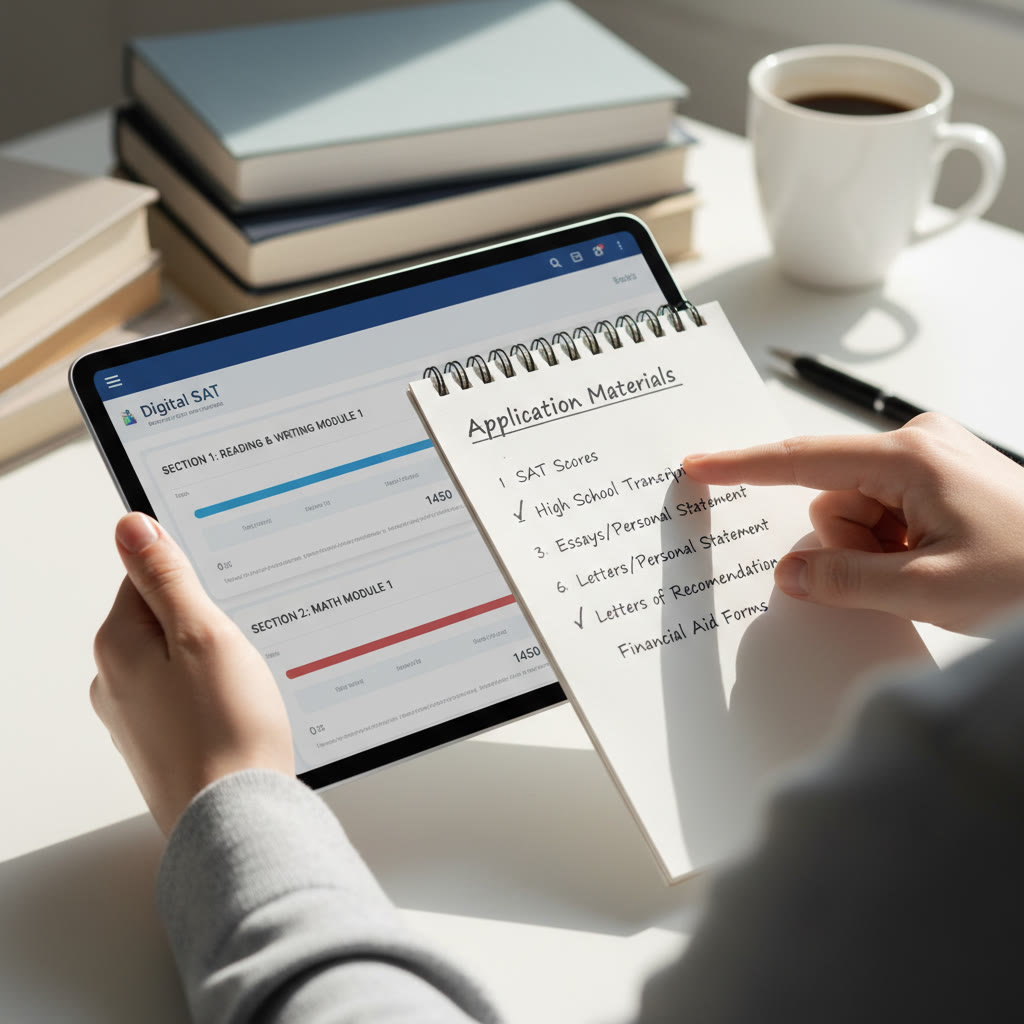
How to send scores to ITESM (practical steps)
Sending scores is administrative but crucial. Follow the steps below to make sure ITESM receives your Digital SAT results in time:
- Create or log into your College Board account and verify your personal details before you register for the test.
- When registering or after receiving scores, use the score-sending option to send official reports to the institution — follow ITESM’s specific instructions (campus code or email for admissions offices).
- Confirm receipt with the ITESM admissions office if deadlines are close. A polite email or portal check can avoid last-minute problems.
If you’re an international applicant, be mindful of processing timelines. Allow extra time for international score transmission and for any additional document translations.
How to set your score goal (a flexible method)
Setting an SAT goal is both strategic and motivational. Use this simple three-step method:
- Identify target programs and check their selectivity (consider campus and major).
- Set three score levels: safe, competitive, and stretch. For example: 1250 (safe), 1400 (competitive), 1520 (stretch).
- Plan study blocks that map to each level — how many hours, what resources, and when to take practice tests.
Mapping a concrete study plan is where personalized tutoring shines. Sparkl’s personalized tutoring can be a powerful fit here: 1-on-1 guidance helps focus study hours on the exact sub-skills you need, tailor practice tests, and deliver feedback — including AI-driven insights to track progress.
Study strategies that actually work for the Digital SAT
Studying smarter beats studying longer. The Digital SAT’s structure rewards strategy, timing, and focused content review. Here are high-impact practices:
- Practice in the digital format. Simulate the real test environment to build stamina and reduce technical friction.
- Use spaced repetition for math formulas and core grammar rules — short, frequent reviews beat marathon sessions.
- Analyze every practice test: track missed question types, timing issues, and repeated patterns. Create a running error log.
- Do active review: don’t just re-solve problems — explain your answers aloud or write brief explanations to lock in reasoning.
- Build targeted workouts: e.g., 30 minutes focused on algebra word problems, then mixed review.
One reasonable tip: prioritize the quality of problems you practice. Challenging, varied problems that mimic official SAT items are more valuable than volume alone.
Personalization and mentoring: how tutoring fits into the picture
When a family is investing time and money into standardized testing and top-college applications, targeted help can make the process less stressful and more efficient. Personalized tutoring provides:
- 1-on-1 guidance tailored to a student’s strengths and weaknesses.
- Study plans that align with deadlines and school commitments.
- Expert tutors who translate test patterns into practical strategies for improvement.
- AI-driven insights (when available) that help prioritize which skills to practice and when to retake the test.
Programs like Sparkl combine human tutors with technology-driven tracking to keep the student’s progress measurable and motivation high. This blend can be especially helpful for students balancing rigorous IB/AP courses or extracurricular commitments while aiming for top ITESM programs.
Nailing the extras: essays, interviews, and scholarships
The SAT won’t write your essays or persuade an admissions officer of your passion. Pair your score with a compelling narrative — a crisp personal statement, strong letters, and meaningful extracurriculars. For scholarship consideration, many institutions (including ones like ITESM) weigh both quantitative scores and qualitative elements.
Scholarship strategy checklist
- Know the scholarships available at your chosen ITESM campus and their SAT or GPA expectations.
- Apply early when possible — some scholarship funds are first-come, first-served.
- Prepare scholarship-specific essays that show impact, leadership, and alignment with the scholarship’s values.
- Use your SAT strategically — a high score can unlock merit-based awards; a lower score can be offset by exceptional extracurriculars or essays.
Common mistakes applicants make (and how to avoid them)
- Assuming a single SAT score tells the whole story: Admissions committees look holistically.
- Underpreparing for the digital format: the interface and timing are different from paper tests.
- Waiting too long to send scores: keep administrative timelines in mind and confirm receipt.
- Neglecting program-specific requirements: some majors require portfolios, tests, or interviews.
- Not practicing with real, official practice tests: official practice materials are the best predictor of performance.
Sample study plan (12-week, focused approach)
This plan assumes roughly 6–10 focused study hours per week and one full practice test every two weeks.
| Weeks | Primary Focus | Weekly Activities |
|---|---|---|
| 1–2 | Diagnostic & fundamentals | Take a digital diagnostic test; review scoring, build an error log; 3–4 short lessons on foundational math and grammar. |
| 3–5 | Targeted skill-building | Focused practice on weakest subscores; targeted 30–45 minute drills; 1 practice test (digital) every 2 weeks. |
| 6–8 | Strategy & pacing | Work timed sections, refine guessing and timing tactics, analyze practice tests for patterns. |
| 9–11 | Polish & practice | Mixed practice sets, simulated full-length digital tests under test-day conditions; review persistent errors. |
| 12 | Final prep & logistics | Light review, ensure test day logistics, send scores where needed, rest and mental prep. |
Real-world examples and mini-case studies
Example 1: Ana — Engineering applicant
Ana had strong math grades but an initial Digital SAT of 1280. She focused her study on algebraic problem solving and data interpretation, worked with a tutor for 1-on-1 sessions twice a week, and improved to 1450 after two months. That jump strengthened her scholarship application for the ITESM engineering program.
Example 2: Mateo — Business applicant
Mateo’s reading score lagged behind his math score. He used targeted reading comprehension strategies, practiced with time-limited digital passages, and combined that with essay coaching. His balanced profile (GPA, activities, SAT) helped him secure admission and a program-specific interview invite.
Final checklist before you press submit
- Confirm whether your chosen ITESM campus requires, recommends, or is test-optional for the application year you’re applying.
- Verify the proper address or code for sending Digital SAT official score reports.
- Ensure all supporting documents (transcripts, essays, letters of recommendation) are prepared and formatted correctly.
- Double-check scholarship deadlines and criteria — some require additional essays or earlier score submission.
- Plan for one calm day before the application deadline to review and submit; last-minute uploads often cause stress.
A short note to parents
Your role is huge: moral support, logistical help, and occasional nudges when stress rises. Balance encouragement with patience. Celebrate progress — every practice test is useful data, even a low score. If cost is a concern, explore scholarship options, school counseling support, or targeted tutoring packages that focus on the student’s highest-impact needs.
Wrapping up: The SAT is a tool, not the entire story
The Digital SAT can boost your candidacy for ITESM, particularly for competitive programs and scholarship consideration. But don’t let the test overshadow the rest of the application. A compelling essay, strong grades, meaningful extracurricular involvement, and thoughtful letters of recommendation all combine to tell your unique story.
If you want a guided learning plan — one that respects your school workload and applies targeted practice where it matters most — consider options that offer personalized attention. Sparkl’s 1-on-1 tutoring, tailored study plans, and AI-driven insights can help turn a scattered study approach into focused, measurable progress. The right support makes the process clearer and more manageable.
Next steps
- Make a short list of ITESM programs and their deadlines.
- Take a Digital SAT diagnostic this week or schedule one with a tutor.
- Set three score goals, and build a 12-week study plan around them.
- Reach out to the admissions office at your chosen ITESM campus if you have specific questions about score submission or scholarships.
With calm, strategy, and the right support, the Digital SAT becomes a tool to highlight your strengths rather than a hurdle. You and your family can navigate this with confidence — step by step, test by test, essay by essay. Buen trabajo — you’ve got this.




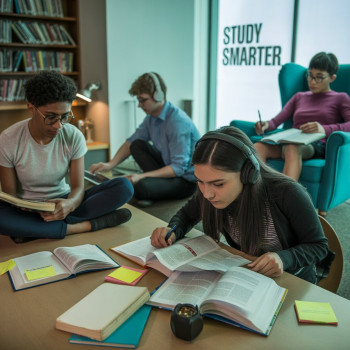
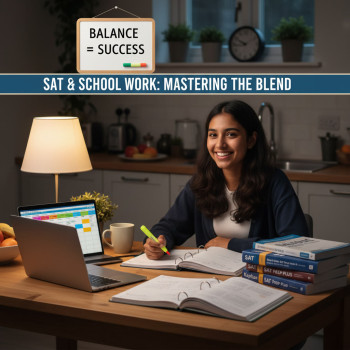

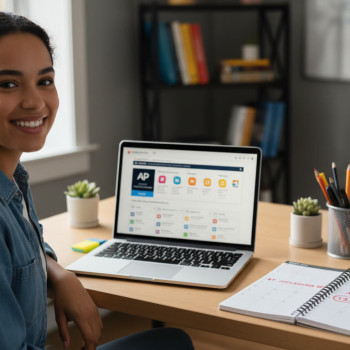
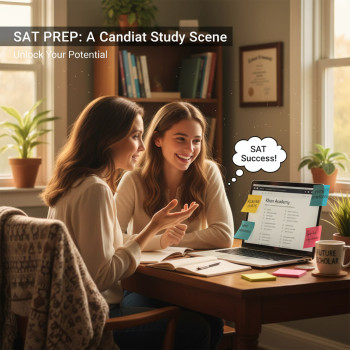










No Comments
Leave a comment Cancel